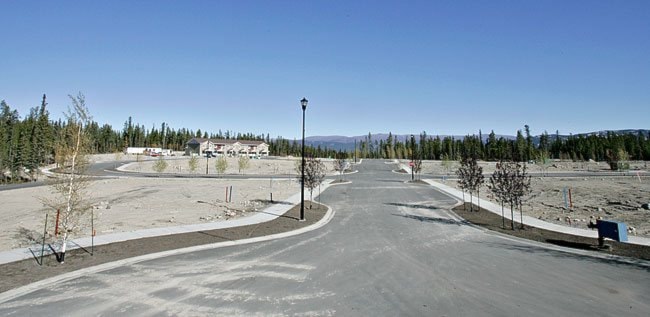Whitehorse’s housing shortage is partly the making of the territorial government.
And the government profits from it.
At least, that’s how it looks at the onset. Take the recently-auctioned Ingram subdivision as an example.
A typical Ingram lot cost $77,341. The territory spent $74,683 to clear the land and install utilities.
So the territory pocketed roughly $2,658 - more, if the lot was auctioned at a higher price.
The entire Ingram subdivision cost $8.9 million. At an average markup of 3.5 per cent, the territory stood to profit $311,500.
Developers dislike this markup. They cite it as another reason why Yukon’s real estate values have climbed so high in recent years.
Not so, says Pat Molloy, Yukon’s director of infrastructure development.
“Sometimes you need to step back and look at the big picture,” he said.
The territory didn’t charge Whitehorse for the sale of Crown land, as it would have with a private developer. Nor did it charge for the work territorial staff put into preparing the land for development.
The government also assumed risks. Contractors could have gone over cost. The economy could have tanked, leaving the territory with inventory on its hands.
And the territory tied up millions of dollars over a period of four years to develop the Ingram lots. This was done without charging interest to the city.
So, did the territory earn a profit in the end? “Overall, it probably zeros out,” said Molloy.
Rural lots are typically sold at cost. Lots in Whitehorse, including Ingram, are sold at prices based on a “blend” of the development cost and market rates, said Molloy.
The problem is the lack of a competitive market in lot development, say realtors. This work is almost entirely done by the territorial government.
Whitehorse has seen several small privately developed neighbourhoods, noted Molloy. Raven’s Ridge is one. Homes build adjacent to Meadow Lakes Golf and Country Club are another.
But, in the end, market value is what government-hired consultants say it is, laid out in territorial reports produced to help price lots.
For the four years Molloy has overseen land development, the government has charged a blended rate for Whitehorse lots.
Why, then, do realtors say that lot prices have risen unreasonably in recent years? Molloy faults the rising costs of labour and materials.
But there’s a bigger problem that’s resulted in soaring house prices in recent years: a supply squeeze caused by too few lots being developed.
The city and territory have aimed to have a two-year supply of lots on hand, but they’ve fallen far short of this target in recent years.
That’s partly because “it took a long time to get some projects through,” admits Molloy. But it’s also because Yukon’s hot economy has increased demand for housing.
Historically, there’s been demand for approximately 50 lots in Whitehorse annually, he said.
“I think if you looked this year, you’d probably see 200 lots.”
The city’s next big new neighbourhood, Whistle Bend, should offer relief to homebuyers.
The first phase of these lots is currently being cleared now. Work to have these lots sold by 2012 is on schedule so far, said Molloy.
Contact John Thompson at
johnt@yukon-news.com.
